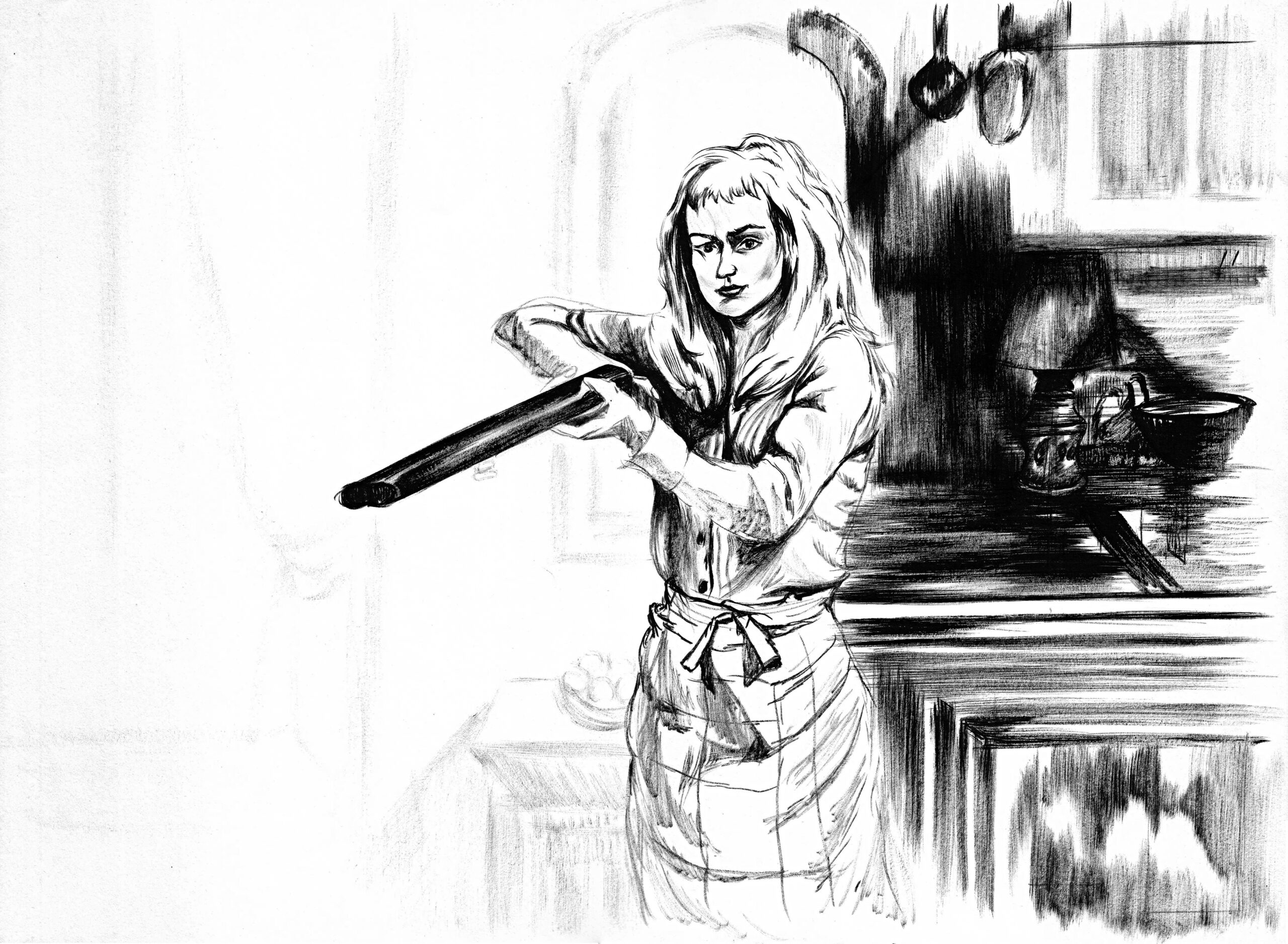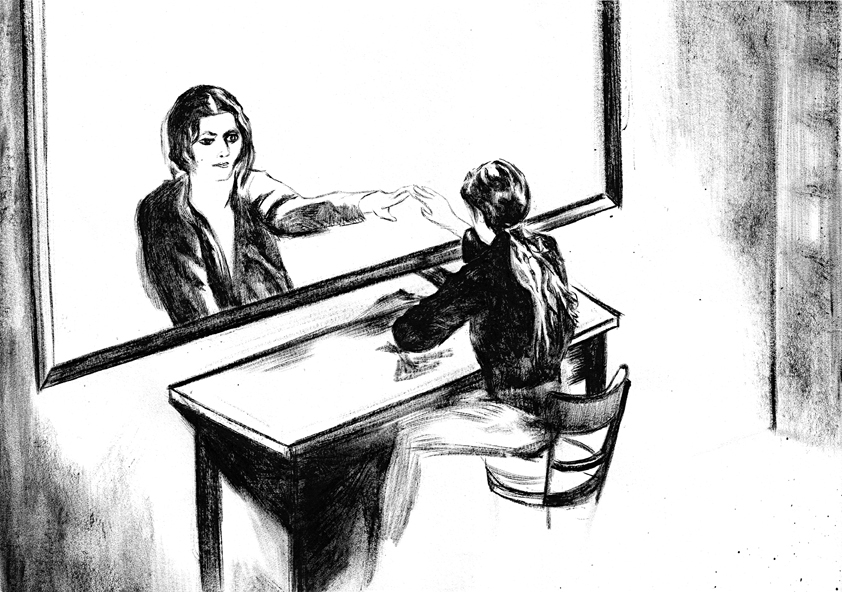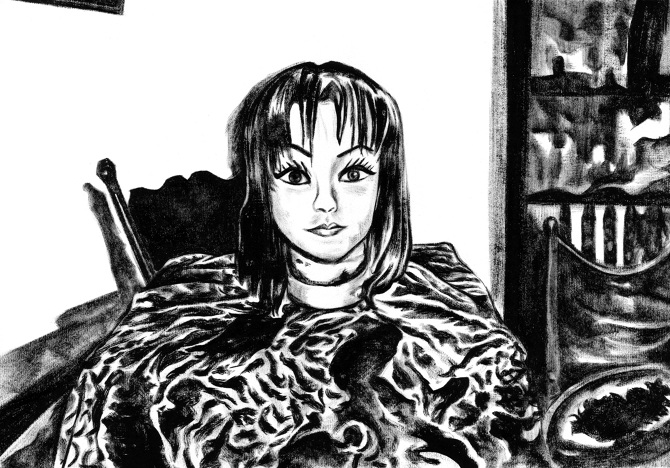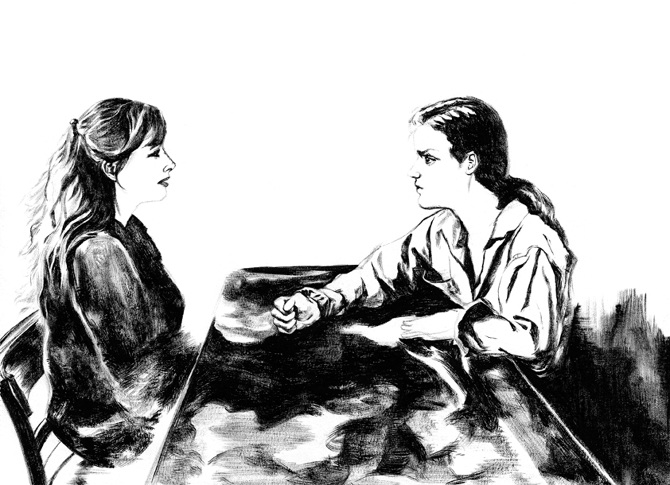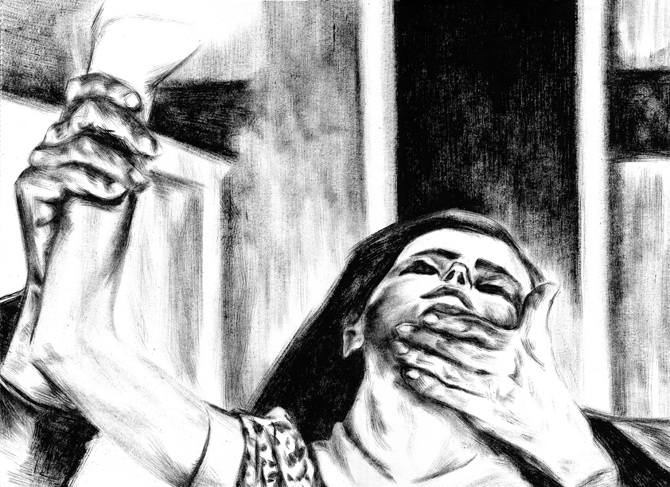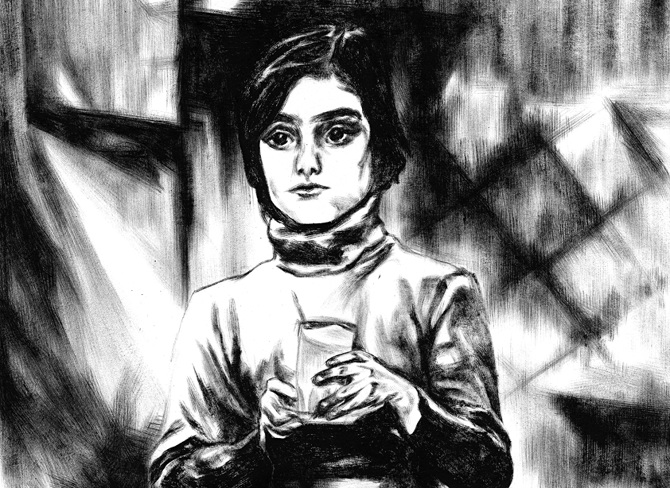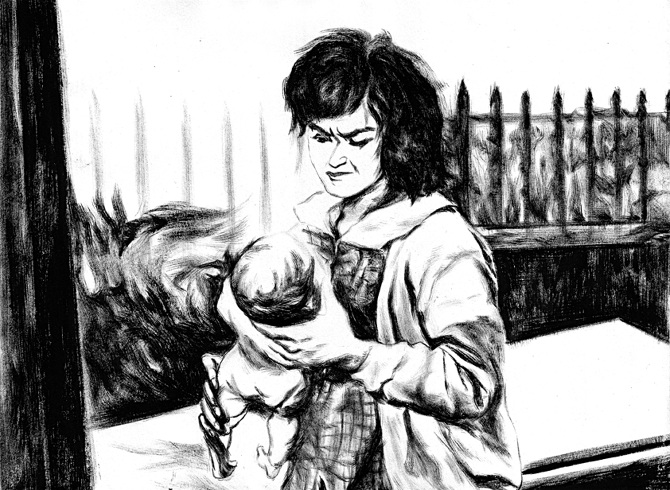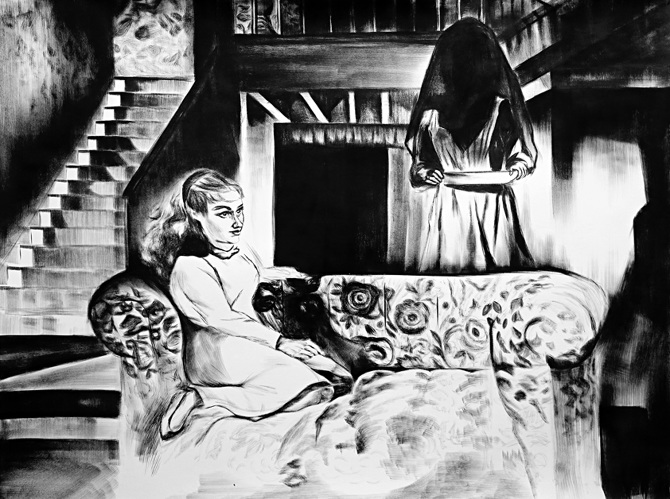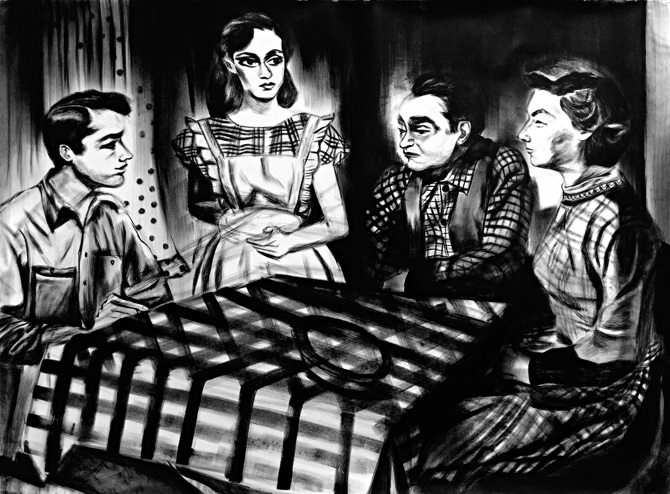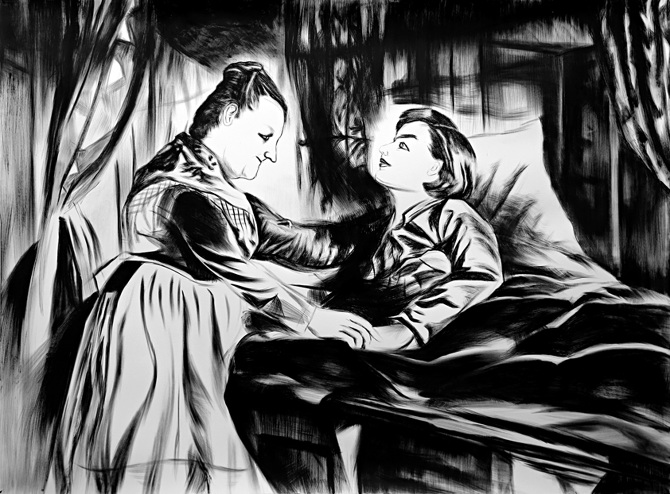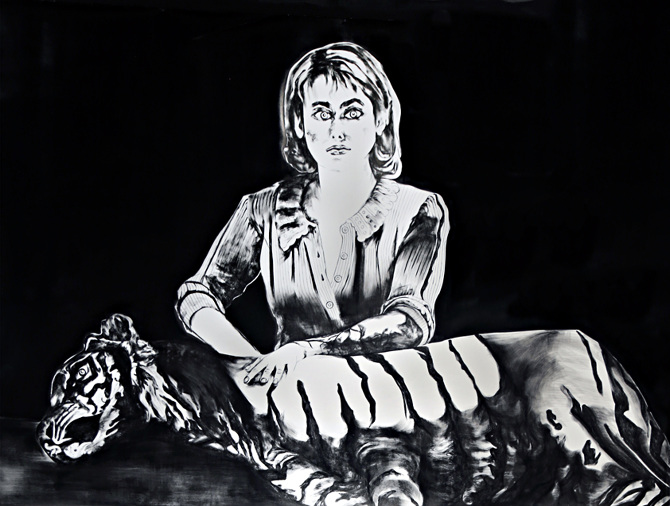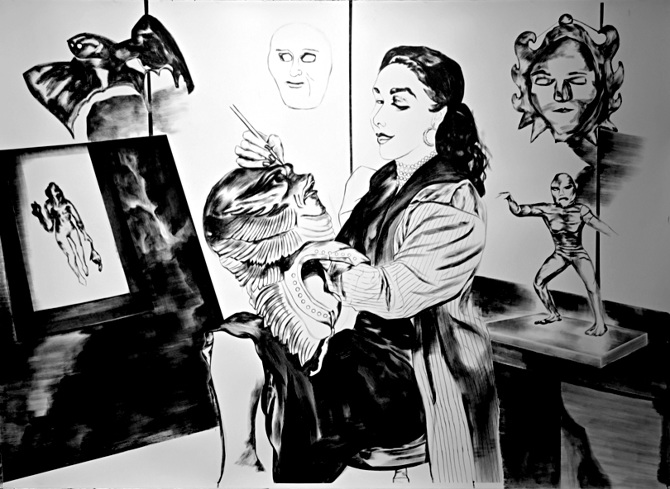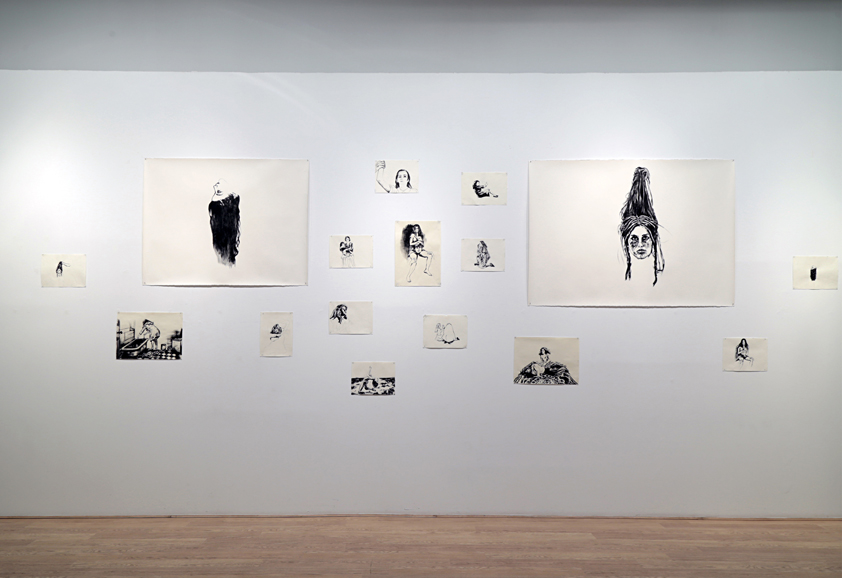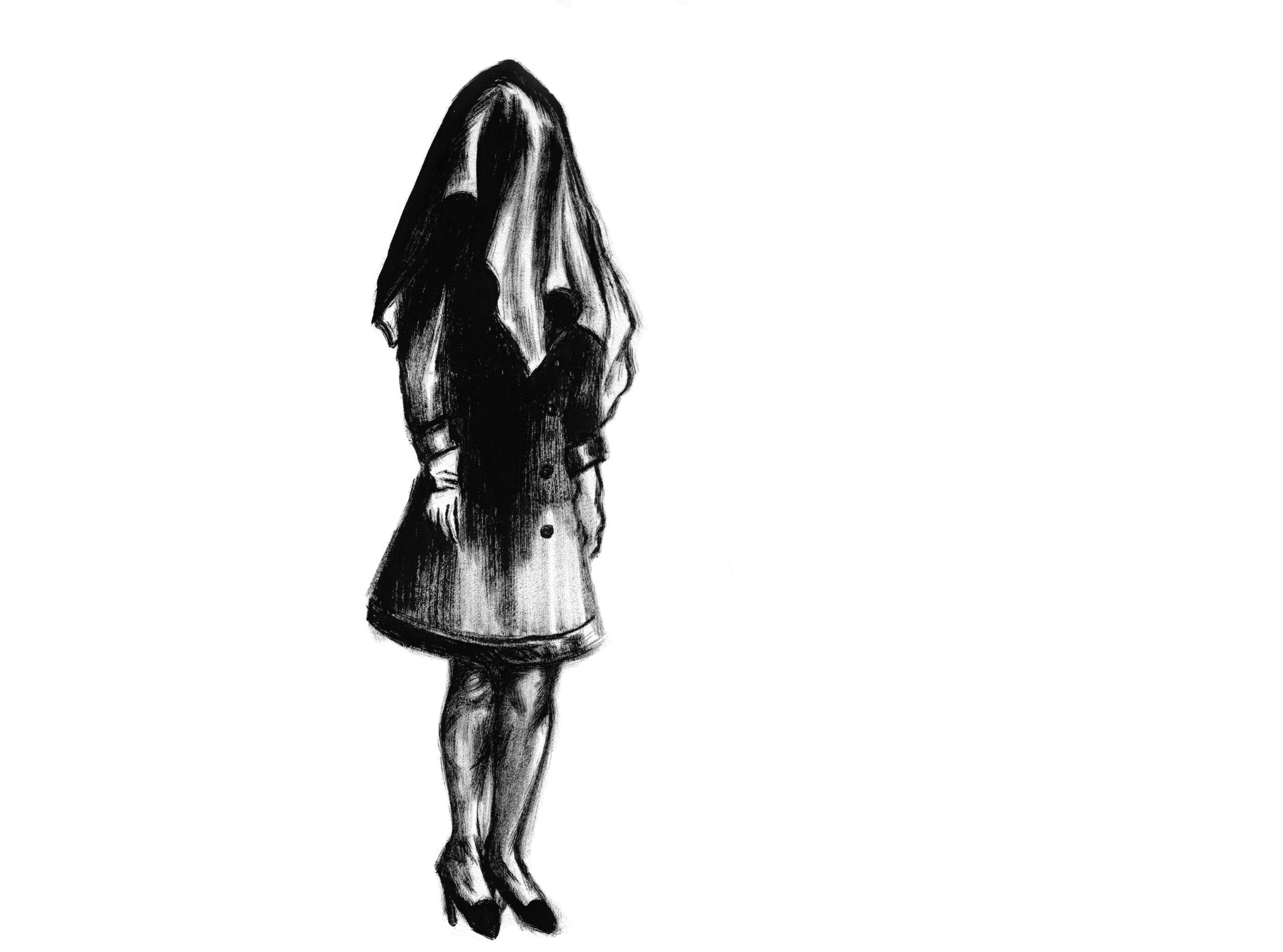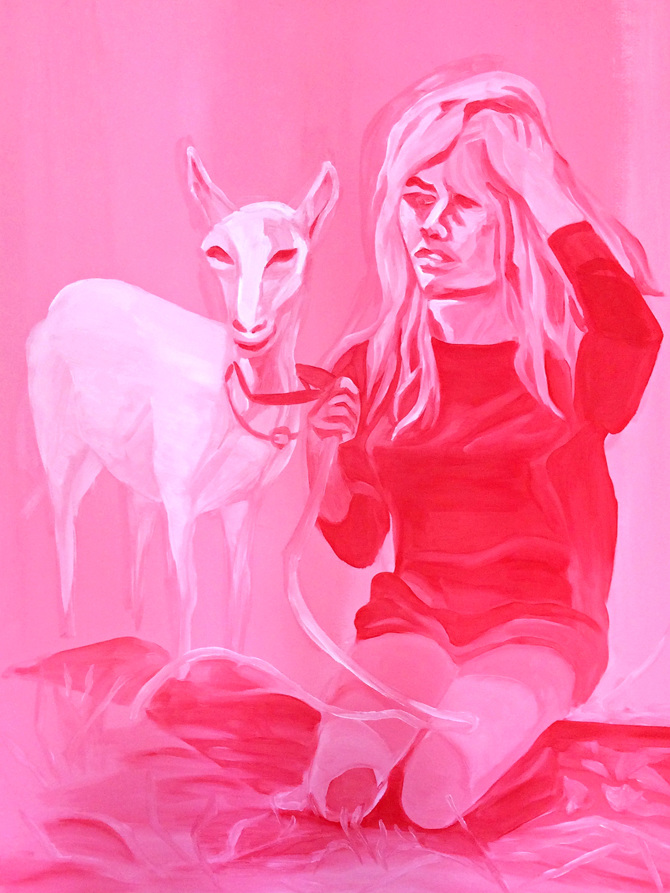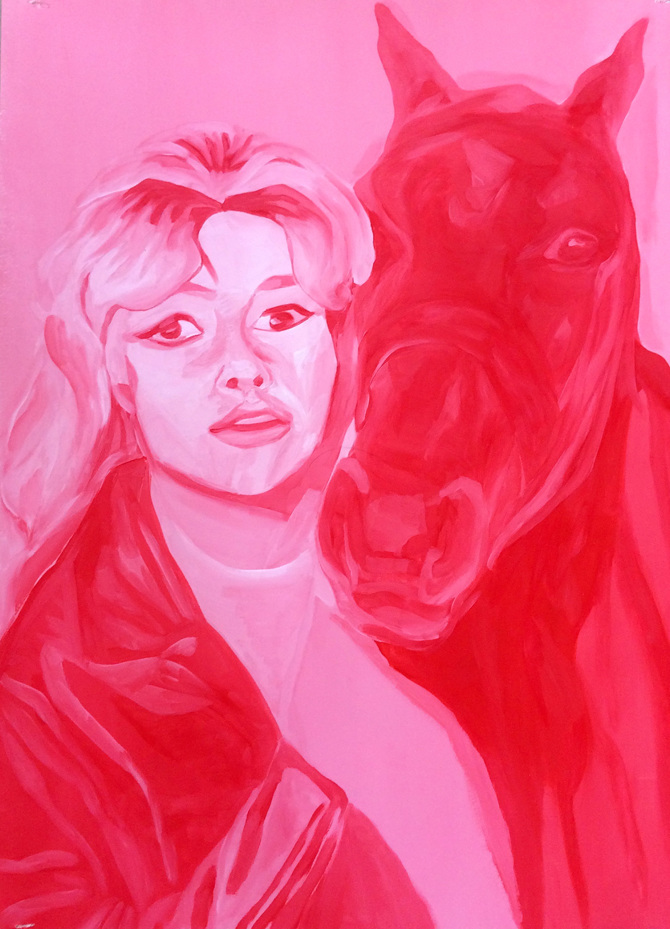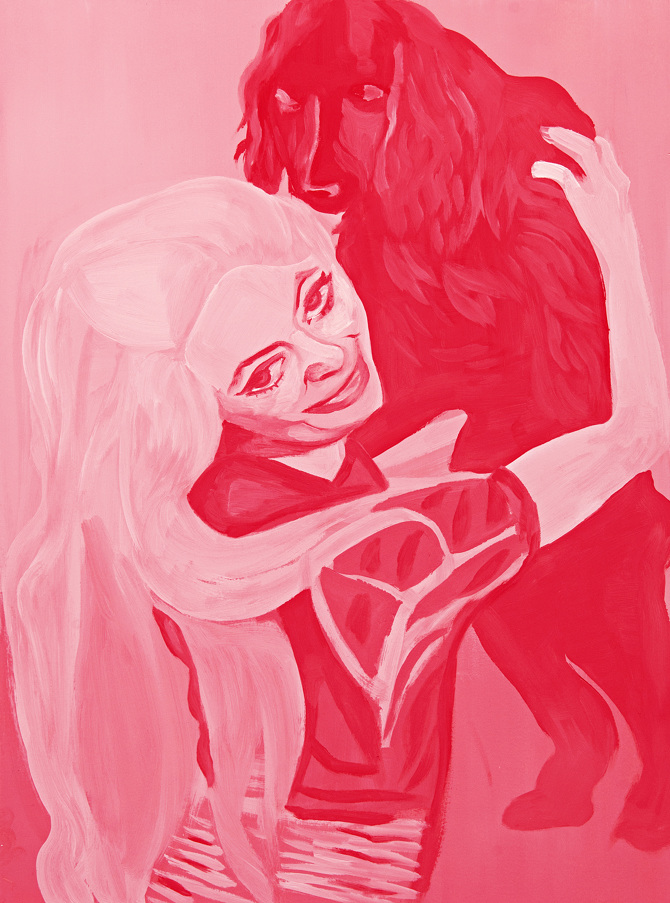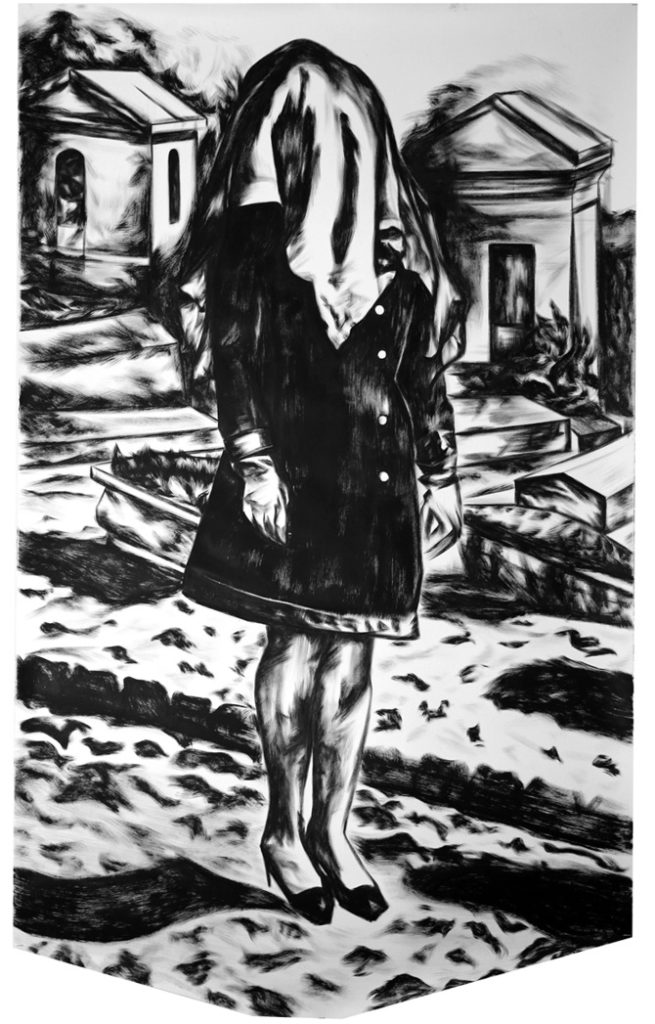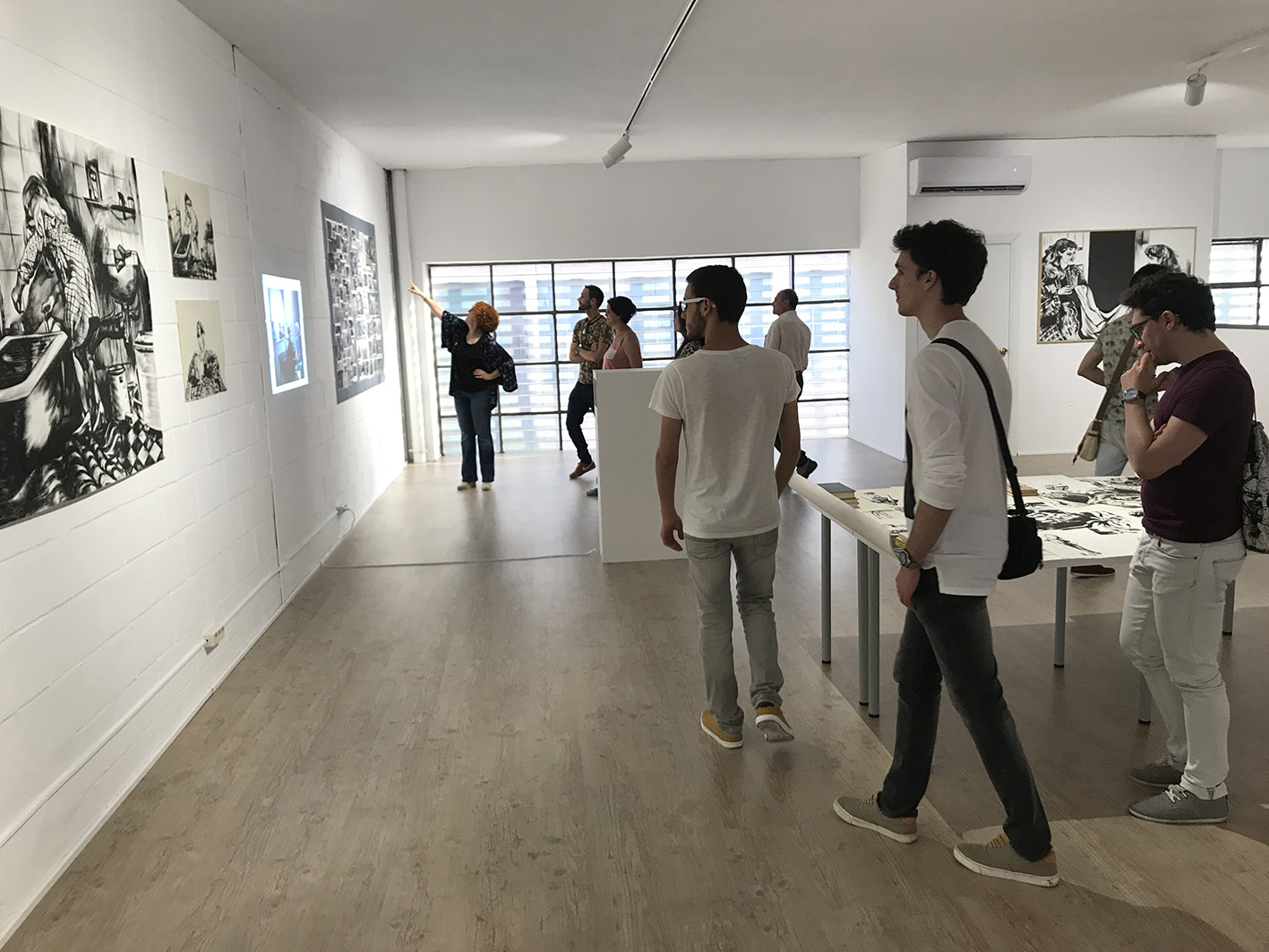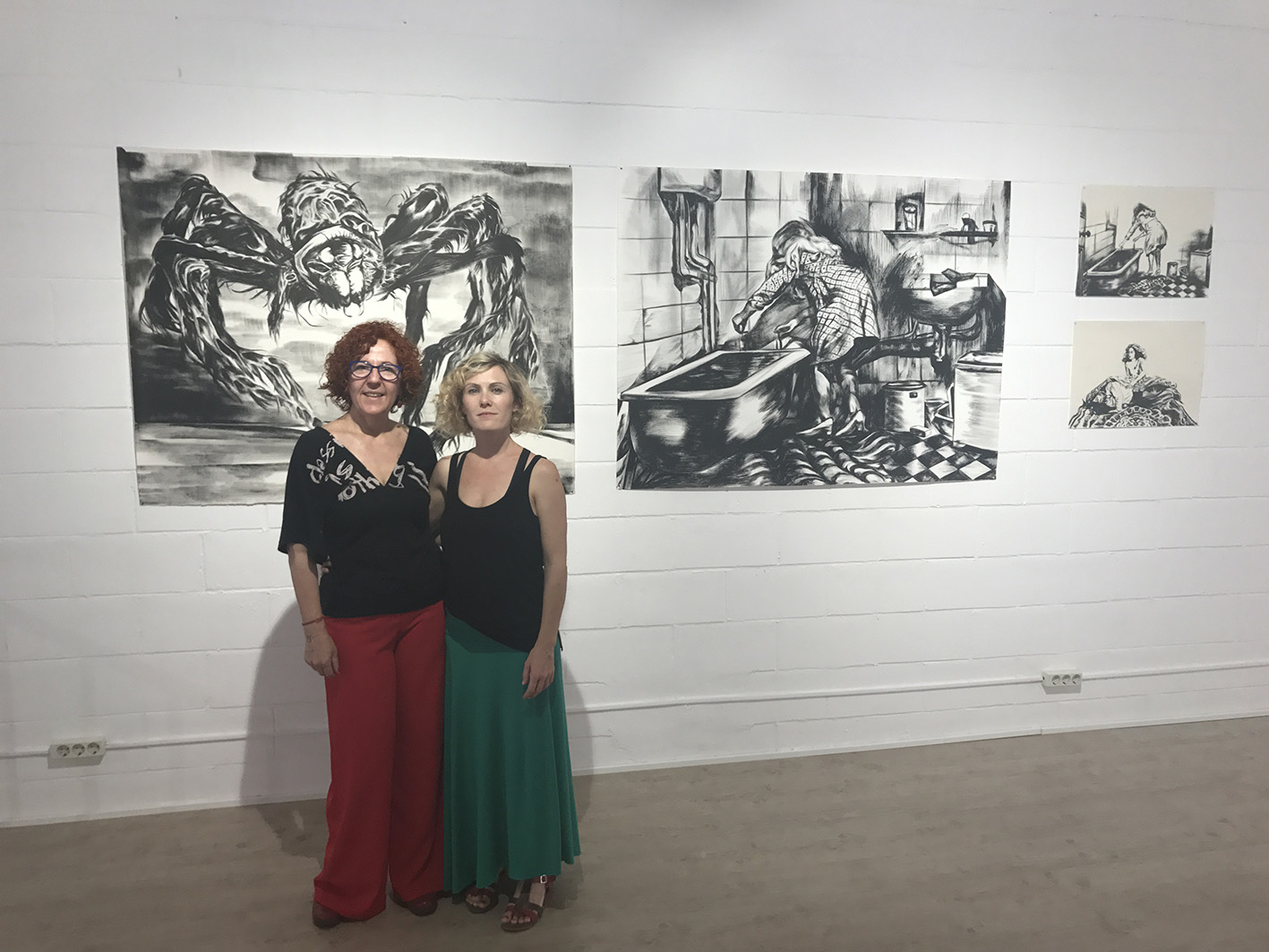La ceremonia
Exposición | Marta Beltrán
Inauguración: 19 de Mayo a las 20:30h
Del 19 de Mayo al 31 de Julio de 2017
Apertura al público
Miércoles, Jueves y Viernes de 17:00 a 20:30
Sábado de 11:00 a 14:00
Marta Beltrán
http://cargocollective.com/martabeltran
Comisaria: Susana Blas
Exposición producida por el Vicerrectorado de Extensión Universitaria, con sede en la Madraza, Centro de Cultura Universitaria de la Universidad de Granada, Área de Artes Visuales.
Beca de Ayuda a la Producción Artística.
«No sé realmente lo que significa ser una mujer libre o una mujer liberada, ni siquiera sé cuál es la diferencia entre un hombre libre y un hombre liberado. Soy una de esas mujeres que han tenido la posibilidad, la intuición o el privilegio de entender lo absurdo del sexismo masculino». Agnes Varda
En La ceremonia, Marta Beltrán (Granada, 1977) diseñó un proyecto de dibujo para El Hospital Real de Granada que ahora hace escala en 13 ESPACIOarte (Sevilla), ampliándose la exposición (concebida como un proceso abierto), y adaptándose a las particularidades de la nueva sala.
La muestra, que toma su título de una película de Claude Chabrol (La cérémonie,1998), compila el trabajo y las últimas investigaciones de la autora, eligiendo algunas de sus series clásicas en tinta china negra sobre papel, junto a nuevas piezas de gran formato que ahondan con más contundencia en su principal motivación: el análisis semiológico de la imagen de la mujer, fundamentalmente en la cinematografía, desde una mirada intuitiva y emocional que permita desvelar los estereotipos, las ideas preconcebidas y las imposiciones sociales que este colectivo soporta.
La autora expresa así su procedimiento y actitud: «A partir de la identificación con prácticas de ficción realizadas por mujeres, o que tienen a estas como protagonistas, ya sea en la literatura, el cine o el cómic, pretendo construir una nueva narración subjetiva. El proceso se inicia con la apropiación de fotografía documental, fotogramas y textos de una serie de películas que giran alrededor de conceptos como la niñez, la maternidad, la amistad, los lazos familiares entre mujeres y la identidad, contemplados desde un ángulo que observa su lado contradictorio».
Marta Beltrán se sirve especialmente de las décadas de los años sesenta, setenta y ochenta para seleccionar los fotogramas que serán el origen de sus dibujos a tinta china negra. En la elección de las escenas busca contrastar la imagen de la mujer en el ámbito doméstico y en situaciones cotidianas, con un inventario de los espacios de la casa: las habitaciones y los objetos decorativos, para crear un relato que combina una forma distanciada en los encuadres con una práctica de dibujo no controlada. Esta distorsión dibujando (irracional, descontrolada) y la elección del formato (pequeño, medio o monumental) son elementos definitivos para generar en el espectador extrañeza, en un primer momento, y reflexión, después.
La mayoría de los dibujos proceden de fotogramas del cine de autor. A Marta le interesa tanto el cine clásico como el alternativo. Durante el visionado de las películas puede sentir una conexión especial con una escena, a nivel emocional, formal o simbólico. Su mente fija el fotograma y detiene el cuerpo de las actrices protagonistas, que van a recibir una nueva vida sobre el papel. La escena, las figuras, son trazadas con tinta negra en el soporte blanco. En esa traslación puede aislar el personaje, o incluir junto a él elementos del fondo. Marta encaja de un modo intuitivo, y la mano, imbuida de nervio, es la que va proporcionando y compensando progresivamente las líneas y los volúmenes para construir una versión distorsionada que en ocasiones poco le debe a la original, haciéndose difícil el reconocimiento de la fuente inspiradora. En general, los rasgos de los rostros se endurecen y en los cuerpos, aquello que parecía bello o misterioso, se torna grotesco, triste o desesperado. Solo en algunos casos domina el hieratismo y el distanciamiento: un estado de quietud más allá del sufrimiento, «como si todo hubiera ya pasado».
«Mi manera de tratar el material es desprejuiciada y está al servicio de descubrir, de permitir que surjan ideas o imágenes, aunque las formas de belleza se vean comprometidas finalmente. La cuestión es que estas imágenes permitan la aparición de contenidos inconscientes y creen nuevas imágenes independientes de las anteriores». Marta Beltrán
En el montaje hemos optado por prescindir de enmarcados y de dispositivos sofisticados de exposición. Las figuras emergen crudas y con sencillez del papel, que en su materialidad se funde con la pared. Eliminados los intermediarios entre el observador y las obras, estas se ofrecen desnudas a la mirada del visitante, que asiste a una evolución desde las primeras piezas de la entrada, todavía con un detallado fondo ambiental y más deudoras del fotograma original, hasta la instalación de Las orantes: un conjunto de papeles fragmentarios y dispersos, en su mayoría de pequeño tamaño, en el que cuerpos distorsionados y gestos aislados divagan por la pared adentrándonos en un universo afectivo en el que el dolor, la tensión emocional o el miedo ya no se apoyan en el fondo, en los objetos, en el entorno social.
Cuatro entornos desnudos
Cuatro son los entornos en los que la muestra está dividida: en primer lugar nos encontramos con La ceremonia (2015-2016) y con Stolen Life (2015). La ceremonia es una instalación que nos presenta dieciocho dibujos de pequeño formato en forma de mosaico, enmarcados por un rectángulo de pintura negra que emula los rebordes del fotograma. El conjunto resume el posicionamiento de la artista en relación con la lectura de imágenes y su estrategia formal de transformación de las mismas. Casi todos ellos han sido seleccionados de películas de autores como Saura o Camus, que construyen un cine de alto valor simbólico y metafórico. Dentro de este mural se encuentra el fotograma del filme que da nombre a la exposición: Disparando, que pertenece a La ceremonia, de Claude Chabrol. Esa mujer de escopeta en mano, que combina una postura valiente y una actitud desencajada, resume bien el carácter de muchos de los personajes femeninos de Marta Beltrán, en los que la sinrazón y la decisión conviven.
Enfrentados a este mural, aparecen cuatro dibujos de una de sus series emblemáticas: A Stolen Life, cuyo título se inspira en la película de 1946 de Curtis Bernhardt, con Bette Davis como actriz protagonista. En el filme, los temas identitarios se sitúan en primera línea: el doble, la realidad y la ficción… Bette Davis interpreta a dos hermanas gemelas enamoradas del mismo hombre. Estas piezas, con un esmerado acabado de los fondos y una factura realista y detallada, son buenos ejemplos de su primer interés por crear un archivo de imágenes que parta del cine clásico y lo analice como una de las fuentes principales de nuestro aprendizaje de los modelos tradicionales de mujer, de los comportamientos que son socialmente admitidos o reprobados.
Una de las instalaciones clave es La Pantalla (2016). Este enorme mural, concebido como una pantalla panorámica de cine enmarcada por un falso cortinaje pintado, «devuelve al cine las imágenes que la artista les robó»; planteando una sesión cinematográfica estática que indaga en las diferencias entre la apreciación del cine y la de la pintura, abriendo vías de comunicación entre ambas disciplinas. De hecho, la bancada situada delante del mural obliga al espectador a sentarse y detenerse en pequeños detalles de un filme estático.
Para «ocupar» ese enorme rectángulo de ocho metros de largo, Marta ha concebido seis dibujos nuevos, que abandonan el detallismo y el tono pintoresco de series anteriores y apuestan por una línea más enérgica y expresionista, centrada en desvelar la psicología de las escenas y de los personajes escogidos. Los seis papeles, adheridos hacen relacionarse de un modo forzado a los personajes de las diferentes historias, encerrados en una pantalla delirante de parches que termina generando una escena con aire de casa de vecinos de pesadilla, un conjunto monstruoso solo unificado por la cortina dibujada.
Por su parte, en Las orantes (2016) se exhiben los papeles minimalistas, tal y como ya hemos citado, a modo de pedazos de una identidad disgregada y poliforme en la que destacan dos personajes repetidos: la joven viuda y la mujer herida por una pedrada, siendo ambas imaginerías recurrentes en la investigación iconográfica de la artista.
Y por último, entramos en el taller, en el espacio que hemos denominado La habitación cerrada (2016), y que tiene un especial significado para Marta por representar su estudio y el lugar mental desde el que trabaja. La instalación permite distintos usos: por una parte funciona como ambiente en el que descubrir, sobre dos mesas y en el suelo, dibujos amontonados y sin terminar que dialogan con un mural de imágenes a color de referentes cinematográficos. También encontramos algunos dibujos enmarcados que nos recuerdan el mobiliario del hogar y contrastan con la pureza y el minimalismo del resto de los entornos; y dos piezas pertenecientes a la serie Little Women (2015), que permiten al público general, conocedor de la popular película de Cukor, comprender mejor la estrategia de deformación simbólica que Marta ejecuta. Finalmente, como pieza especialmente relevante de este espacio concebido también como lugar de encuentro para talleres, un diaporama de aire retro proyecta en uno de los muros, de forma discreta y en color, los fotogramas precisos que inspiraron cada una de las piezas del proyecto, invitando al público a que haga las conexiones y arme las parejas.
Tres ejes subjetivos se cruzan en La ceremonia: por una parte la investigación sobre la imagen de la mujer en nuestro imaginario cultural, analizando el lenguaje cinematográfico y los clichés que perpetúa; en segundo lugar: una reflexión sobre el confinamiento histórico (físico y psicológico) de las mujeres en el ámbito privado del hogar y sus variantes (de la reclusión a «la habitación propia»); y en último término: la apuesta decidida por nuevas formas de conocimiento basadas en la intuición, en la sabiduría del cuerpo y en el intercambio de afectos que permitan imaginar nuevos modos de relacionarnos en sociedad, situando la cooperación, la colaboración y los cuidados por encima de la competencia, los logros individuales y el crecimiento económico.
Conforme asimilo el proyecto, quizá sea para mí la sala de la capilla, en su imperfección y humildad, en su despojado abandono de papeles sueltos dispersos por los altos muros que los degluten, quien exprese mejor una de las virtudes del trabajo de Marta Beltrán: mostrar aquello que no se puede contar, utilizando una suerte de escritura gráfica emocional. Y aquí citaré a María Zambrano: «Hay cosas que no pueden decirse, y es cierto. Pero esto que no puede decirse es lo que se tiene que escribir. […] El escritor sale de su soledad a comunicar el secreto»[1].
De la misma manera, Marta Beltrán «solo sale de su soledad a dibujar los secretos».
Cabezas de largas cabelleras y posturas forzadas flotan huérfanas, sin escenografía, expuestas al baño de la luz sobrenatural que penetra por la ventana, generando en el visitante un cierto mareo por el curioso baile de deseos y de anhelos inconexos.
Susana Blas
Comisaria de la exposición
En Madrid, diciembre de 2016
[1] María Zambrano, Hacia un saber sobre el alma (1950) Por qué se escribe.

